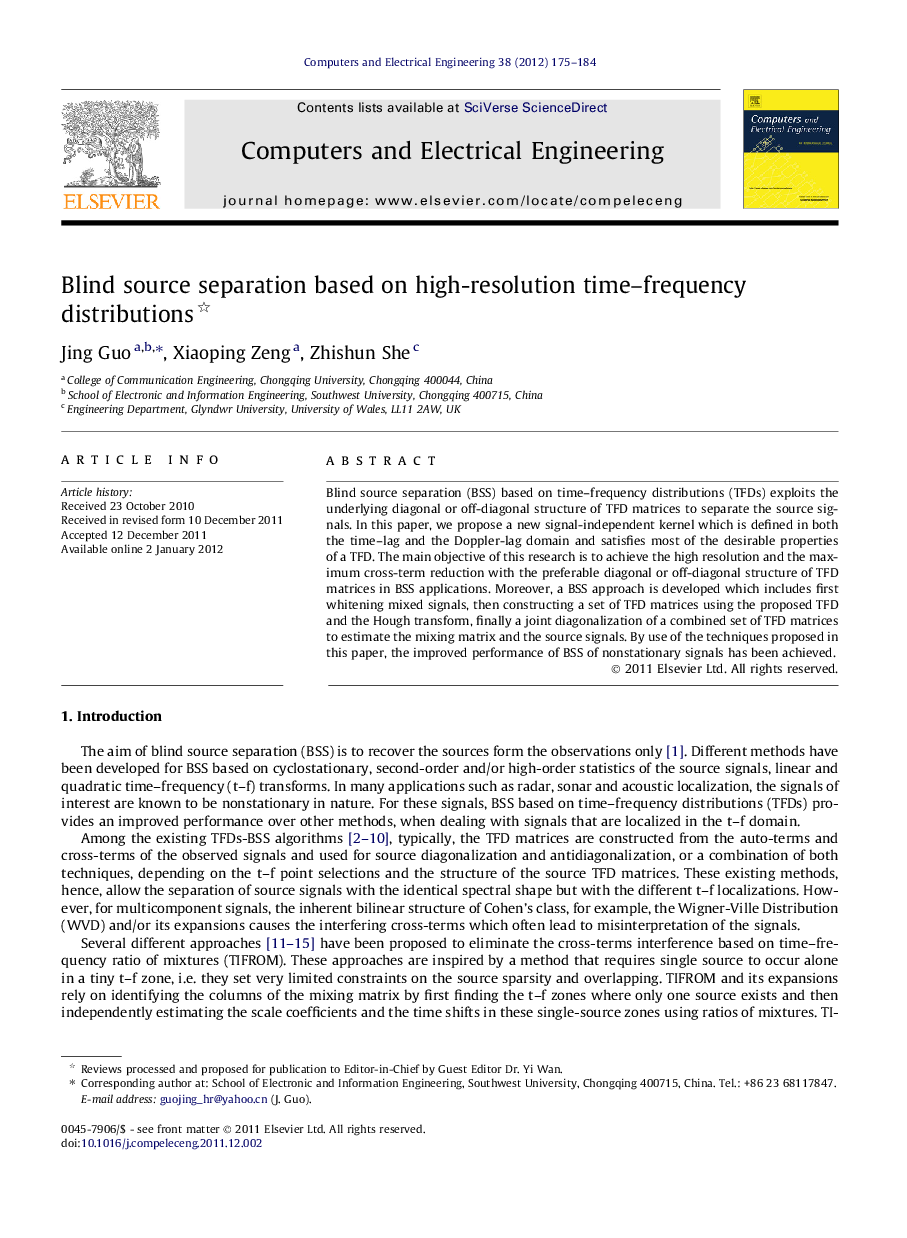| کد مقاله | کد نشریه | سال انتشار | مقاله انگلیسی | نسخه تمام متن |
|---|---|---|---|---|
| 453780 | 695013 | 2012 | 10 صفحه PDF | دانلود رایگان |

Blind source separation (BSS) based on time–frequency distributions (TFDs) exploits the underlying diagonal or off-diagonal structure of TFD matrices to separate the source signals. In this paper, we propose a new signal-independent kernel which is defined in both the time–lag and the Doppler-lag domain and satisfies most of the desirable properties of a TFD. The main objective of this research is to achieve the high resolution and the maximum cross-term reduction with the preferable diagonal or off-diagonal structure of TFD matrices in BSS applications. Moreover, a BSS approach is developed which includes first whitening mixed signals, then constructing a set of TFD matrices using the proposed TFD and the Hough transform, finally a joint diagonalization of a combined set of TFD matrices to estimate the mixing matrix and the source signals. By use of the techniques proposed in this paper, the improved performance of BSS of nonstationary signals has been achieved.
Figure optionsDownload as PowerPoint slideHighlights
► A member of the quadratic time–frequency distributions (TFD).
► The optimization procedure of the TFD’s parameters for a specific application.
► A blind separation approach under the additive Gaussian noise environments.
► Separation of multiple Gaussian sources.
Journal: Computers & Electrical Engineering - Volume 38, Issue 1, January 2012, Pages 175–184